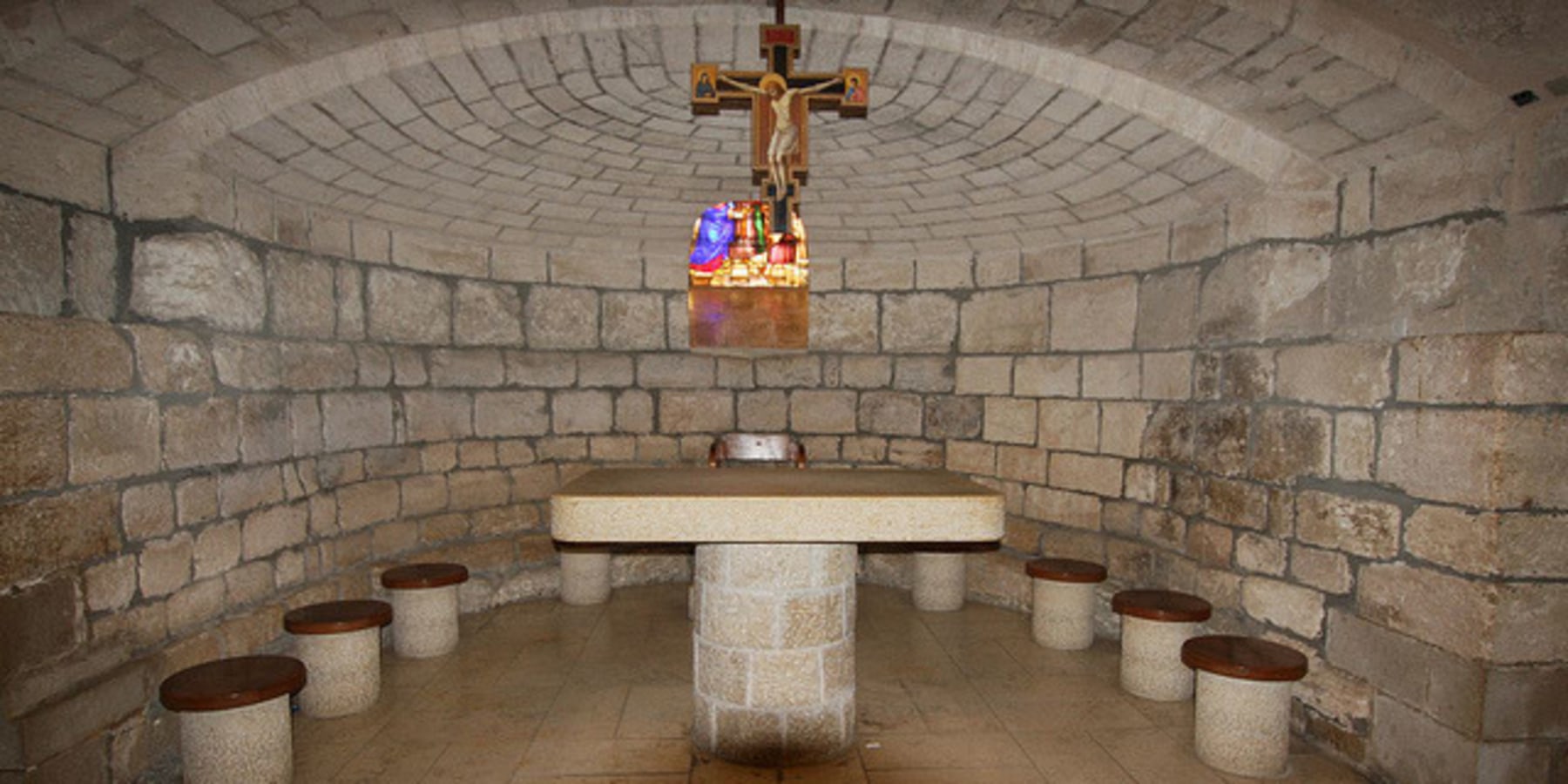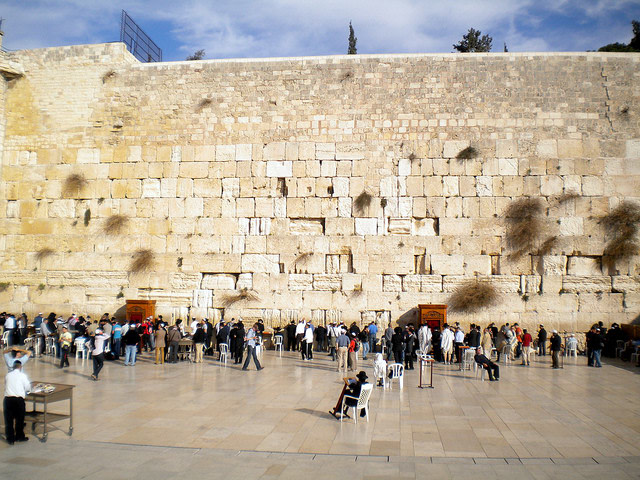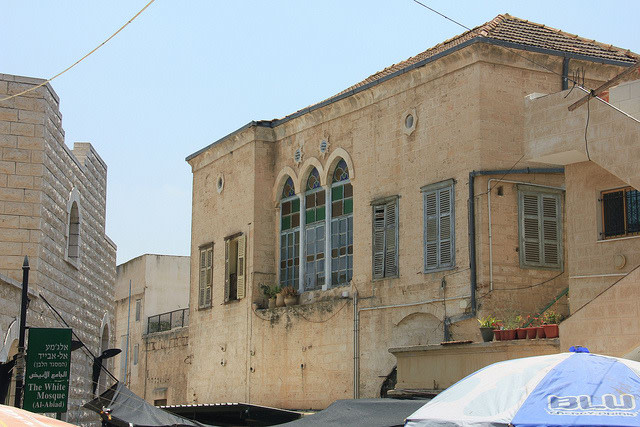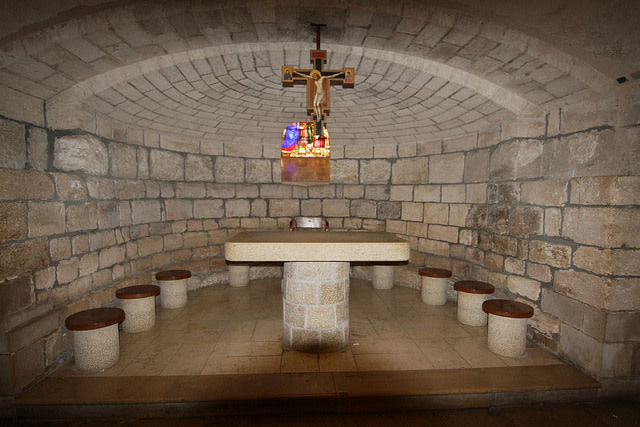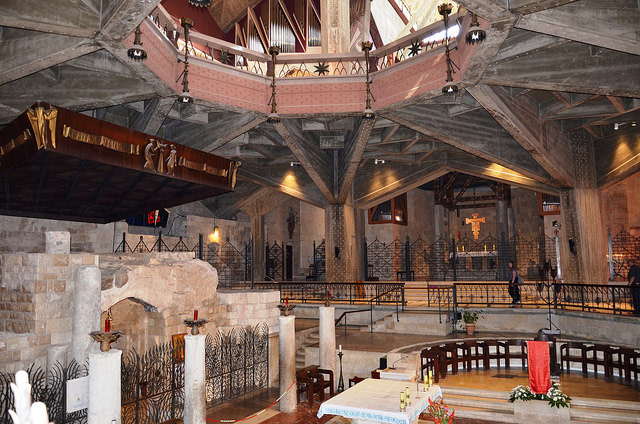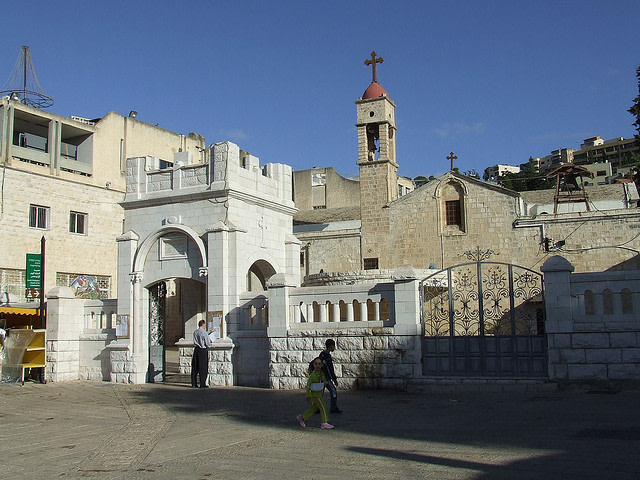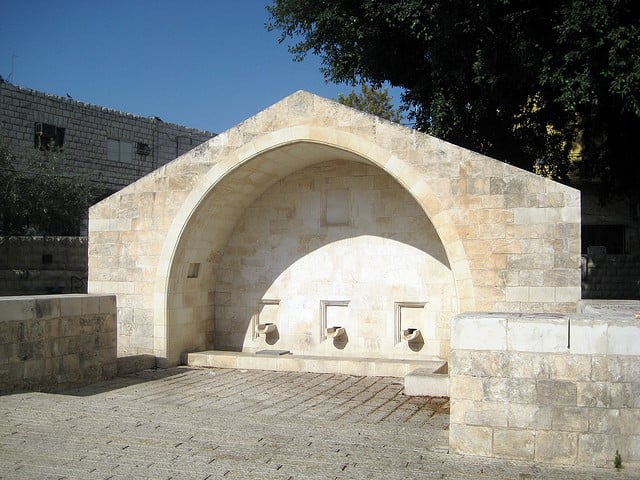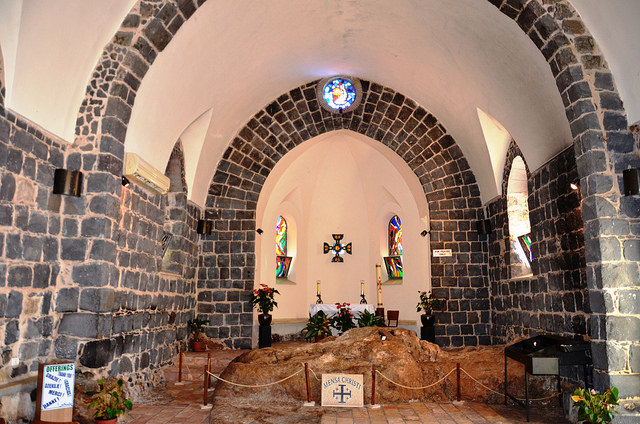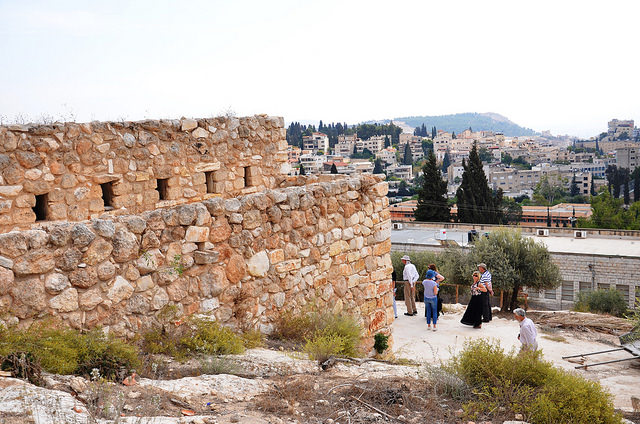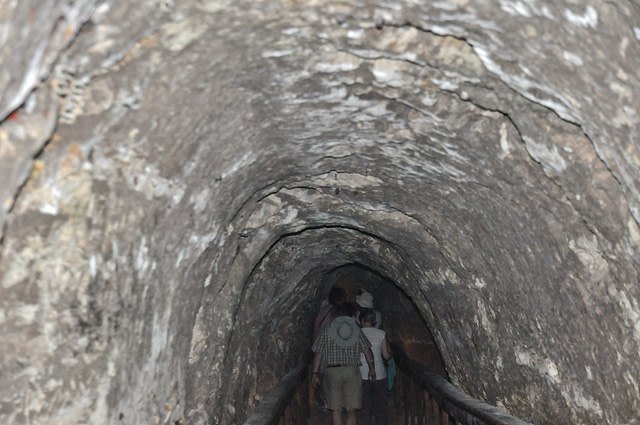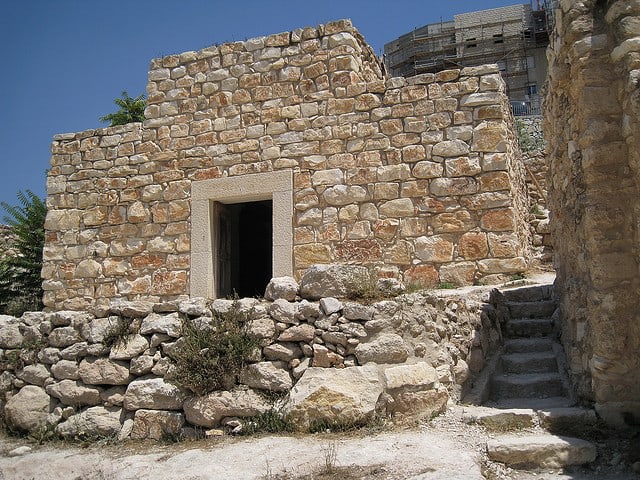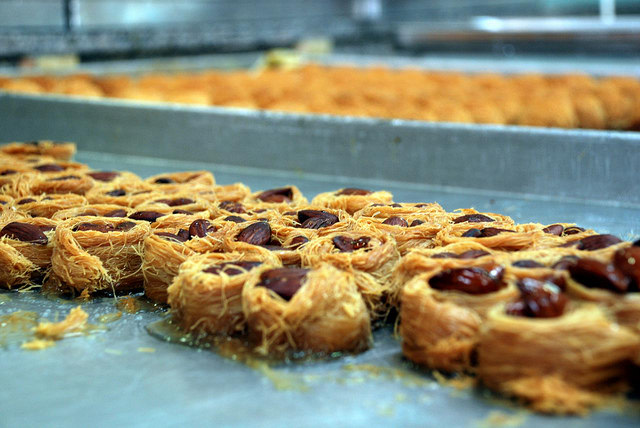| 8 mins read
By Julie Jennings
Set amongst the hills of northern Israel and located just 16 miles from the Sea of Galilee, Nazareth is the largest Arab city in Israel. To this day, the customs and architecture of ancient Lower Galilee are preserved and honored in Nazareth. Just a few hours from Jerusalem and Tel Aviv, it is home to Arabs, Muslims, Christians, and Jews, although the demographics of the city have fluctuated over its long history.
Nazareth, though modern in many ways, maintains an ancient atmosphere with its clean, simple architecture and numerous churches and mosques. The Muslim holy sites in Nazareth include the White Mosque (al-Abiad), the Peace Mosque (al-Salam), the Shrine of al-Sheikh Amer, the Shrine of Nabi Sa’in, and the Shrine of Shihab e-Din. The White Mosque is the oldest of its kind and is located in Harat Alghama, the "Mosque Quarter.” Nazareth also maintains its preservation of the history of Jesus and Christian teachings. Each year thousands of pilgrims come to this beautiful city to experience the early life of Jesus, drawn to the many churches and monasteries of Nazareth’s “Old City.”
A Brief History of Nazareth
Although Nazareth’s place in religious history continues to stir debate, the Christian’s New Testament describes Nazareth as the boyhood home of Jesus, as well as the place from which Jesus was ostracized for his beliefs. At the time, Nazareth was a Jewish city. Its Christian holy places were not mentioned until the time of the Roman Empire when Christianity was named the state religion. The Crusades brought violence and turmoil to Nazareth, and by the early 16th century the Ottoman Turks had banished all Christians from Nazareth. In the mid-16th century, the emir of Lebanon began to allow Christians back into the city. Arab Christians now make up almost one-third of Nazareth’s population, and the city is a major commerce center for the Arab population. The Jewish suburb of Upper Nazareth, built in 1957, today includes several industrial plants, which provide employment for many residents.
Places to Visit in Nazareth
The Catholic Church of the Annunciation, also known as the Basilica of the Annunciation, is the site in which, according to the New Testament, the archangel Gabriel appeared to the Virgin Mary and told her she would give birth to Jesus. Completed in 1969, this large church sits on the site of many historical churches destroyed over time and rests on the site, or cave, in which Mary learned of her pregnancy. Considered one of the most holy shrines in Christianity, this church is appealing to the artist and historian’s eye for the beautiful mosaics displayed and presented to Nazareth from countries all over the world.
Under Greek Orthodox or Eastern Orthodox beliefs, the Church of St. Gabriel is the actual location of the Annunciation. An ancient church, rebuilt several times since its first creation likely during the Byzantine Era, St. Gabriel’s sits near Mary’s Well, and is unique in that the spring water still flows at the well and beneath the building. Many visitors come to this highly revered site on pilgrimage, so Nazareth tour guides typically encourage their tour groups to visit early. The ornate interior is decorated with paintings, frescoes and carvings from times long past.
Mary of Nazareth International Center, also referred to as Centre International Marie de Nazareth, is located just around the corner from the Basilica and runs a popular multi-media presentation about the life of Mary of Nazareth. There is a quiet chapel and an even more secluded rooftop terrace where visitors can contemplate their visit to Nazareth over lunch and a stunning view of the city.
Mensa Christi, also called the “Table of Christ,” is celebrated in Christian tradition as the place where Jesus dined with the Apostles after the Resurrection. This chapel, located in “Old Town,” was built by the Franciscan Order in the latter half of the 18th century. The existing church is a renovation completed in 1861. More recently, the Israeli government and local municipality completed an $80 million renovation and restoration of Nazareth’s “Old Town,” and the church’s frescoes and dome were included in the project.
Nazareth Village takes travelers back more than 2,000 years to a time when farmers worked their lands in the old Galilean tradition and Jesus spent his childhood with Mary and Joseph. The Nazareth Village, a non-profit organization, replicates life in the first century, creating an inviting and educational atmosphere with “villagers” on hand to demonstrate and explain the different activities. It is a place where visitors can experience a real working farm on what was once a 1st century homestead, including well-researched representations of the homes, synagogue, tombs, clothing, language, olive and wine presses, and irrigation systems of those times. It is worth touring for its well-done glimpse into Galilean life during the time of Jesus.
Tel Megiddo is an ancient archaeological site dating back from the Neolithic Period (7000 BC) to the end of the Persian Period (332 BC. In the Greek language, Megiddo means the Armageddon. The ruins of an ancient fortress town, Megiddo has now revealed more than 20 layers of ruins over one hundred years of excavation. It was a highly sought after area due to its location on the ancient trade routes between Egypt and Assyria, and its people created one of the most intricate water systems of their time. A tour down to the springs is possible, but keep in mind the many steps and bring walking shoes. Visitors may also need the assistance of their Nazareth Tour Guide to arrange travel to and from the nearby historical site.
Cana is another area with a beautiful church and historic location for Christians, particularly for those wishing to renew their wedding vows. The actual location of this site, known in Christian tradition as the place Jesus performed the first miracle of turning water into wine, is debated. One such location just about four miles from Nazareth is the modern Arab town of Kafr Kanna. The church’s architecture is simple and clean. Visitors can go downstairs to the museum and stay for Cana winetasting; wines are sold throughout the area. (The other location is in Lebanon.)
Dining and Drinking
Nazareth locals enjoy several cafes and restaurants, which offer Arab cuisines and drinks. Sit in one of the outdoor patios near the beautiful churches and mosques, while enjoying the local music and soaking up the history and culture of Nazareth. Perfectly roasted lamb kabobs and an array of exquisite meats, homemade hummus, fresh produce and salads, local olives, and many other specialties from Arab and Israeli menus can be found. Baklava is a special sweet treat made fresh in local bakeries. This area of the world is rich in flavors, spices, fresh ingredients and aromas, so indulge and enjoy. Although the city is a highly sacred religious setting, there are plenty of nightclubs to keep everyone entertained after a long day of sightseeing. Some of these clubs offer music and hookahs. During the day, many gift shops in “Old Town” and in the modern areas of the city offer locally made honeys, date spreads, olives, wines, and other edible keepsakes.
Some DO’s in Nazareth
DO remember to wear clothing appropriate for religious sites, including long pants or skirts, and cover shoulders. Many places will require this for entry.
DO consider traveling to Nazareth at Christmas, a highly important and celebratory time in the city.
DO speak to a local Nazareth Tour Guide to arrange travel to Nazareth, Israel, and around the many important historic and religious sites in the city. Driving a private vehicle in the city can be challenging.
DO check the schedules for the many sites, as religious holidays will affect hours of operation.
A Few DON’TS in Nazareth
DON’T forget to show appropriate respect for the sacred sites to be visited in this highly religious and historic tourist area.
DON’T forget to pick up Israeli currency at the airport or from a credible exchange broker. The Shekel is the current Israeli currency.
Getting There and Using Public Transportation
The closest airport to Nazareth is Ben Gurion International Airport in Tel Aviv, Israel. From there it is about two hours by bus to Nazareth, but it may also be reached by bus from Jerusalem or Haifa. Keep in mind that buses and other public services are not available on Sundays or Jewish holidays. Once there, it is best to see the city on foot. Traffic laws and congestion are difficult to avoid.
(Julie Jennings enjoys writing about people she’s met, places she’s visited and experiences she’s had. She lives with her two children in Southern California and dreams of taking her next trip.)
Image Details and Licenses: https://flic.kr/p/8UPaQP (kimkubrick, CC BY-ND 2.0), https://flic.kr/p/e726gh (Gil Eilam, CC BY-NC-SA 2.0), https://flic.kr/p/8FBcqK (Simone Baldini, CC BY-NC-ND 2.0), https://flic.kr/p/pGLPJA (Michael Jones, CC BY-NC-SA 2.0), https://flic.kr/p/4SPGAU (Chris Yunker, CC BY-SA 2.0), https://flic.kr/p/5rwYyW (Jamie Lynn Ross, CC BY-NC-SA 2.0), https://flic.kr/p/pGZYVT (Michael Jones, CC BY-NC-SA 2.0), https://flic.kr/p/pGuqTq (Michael Jones, CC BY-NC-SA 2.0), https://flic.kr/p/dVnbX5 (Otto_Friedrich45, CC BY-NC-SA 2.0), https://flic.kr/p/54anXK (Justin Garland, CC BY-NC-SA 2.0), https://flic.kr/p/dnEqwG (StateofIsrael, CC BY-SA 2.0)

